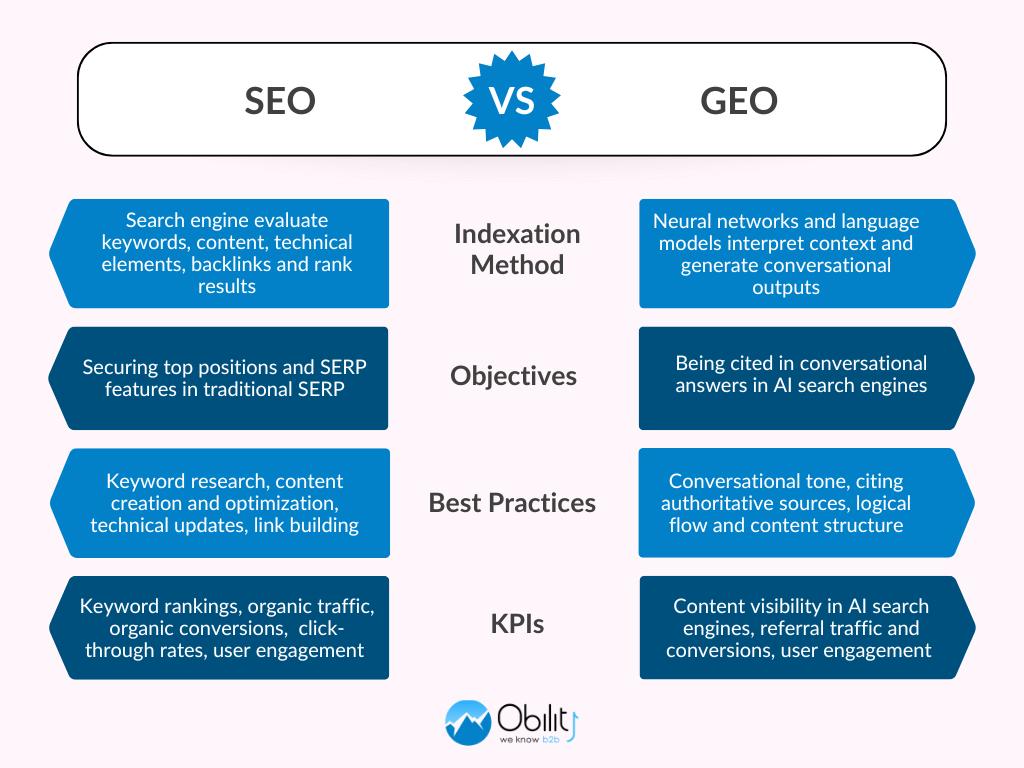For over 30 years, Search Engine Optimization (SEO) has helped websites rank by using a combination of factors such as keywords, backlinks, and structured content to deliver results to audiences. As search changes, AI-powered engines are reshaping discovery by generating direct answers and contextual responses. AI-driven search tools like ChatGPT and Google’s Gemini now capture 78% of global AI search traffic, signaling a shift in user behavior.
Generative Engine Optimization (GEO) builds on SEO’s foundation, keeping content visible in AI-driven search. but while SEO focuses on ranking in search results, GEO ensures content is structured for AI-driven responses. Understanding their differences is crucial for ranking in an AI-powered world.
What is The Difference Between SEO and GEO?
SEO and GEO are both designed to deliver the most accurate result to a user’s query possible.
- SEO: Originating in the mid-90s, SEO is used to help websites rank in search results by using a combination of keywords, backlinks, and metadata. It is powered by algorithms that analyze content relevance, site authority, and technical factors like page speed and mobile-friendliness. The goal of SEO is to attract organic traffic by matching content with user queries.
- GEO: Originating in 2022, GEO best practices requires that content be aligned with AI-generated search responses. It focuses on making content clear, credible, and easy for AI to process. It uses reliable sources, straightforward language, and organized information so AI models can quickly find and display answers in search results.
Key Differences:
- SEO focuses on technical aspects: keyword density, backlinks, and meta elements.
- GEO stresses clear, authoritative writing that directly answers queries, with an emphasis on readability and verifiable sources.

The Evolution of Search
Search has never stood still. What started as simple keyword matching has become a complex system driven by AI. GEO is the next step in SEO’s evolution, and here’s how we got here:
- 1990s – Early SEO: Search engines rank pages based on keyword matching and basic metadata.
- 2000s – Algorithm Refinements: Google introduces PageRank, backlinks become critical, and spam tactics lead to penalties.
- 2010s – AI and User Intent: Search engines prioritize content relevance, natural language processing (NLP), and mobile-first indexing.
- 2020s – AI-Generated Search: Large language models (LLMs) power AI-driven search, shifting focus from rankings to direct answers.
- 2022 – GEO Emerges: AI models like ChatGPT and Google’s SGE generate responses, requiring content to be structured in a way that AI can interpret it.
Similarities Between SEO and GEO
The purpose of any kind of search engine is to get users the best possible search results, and that means they will do a lot of the same things.
- Goal of Visibility: Both aim to make content easier to find in search results.
- Content Quality: Clear, useful, and well-organized content is essential for both.
- Content Structure: Both benefit from organizing content in a way that search systems can easily interpret and including elements such as titles, headings, schema markup, and metadata.
- Technical Optimization: Both benefit from optimized site structure, fast load times, and mobile-friendly designs.
- User Intent Focus: Both prioritize matching content with what users want to know and require insights into user intent, interests, and common search patterns.
- Analytics-Driven: Both use data and performance metrics to refine content strategies and both consider factors like click-through rates and time spent on pages as indicators of relevance.
- Competitive Landscape: Both require monitoring competitors to stay relevant in search results.
- Continuous Adaptation: Both must adapt to algorithm changes and evolving search behaviors.
- Authority Building: Establishing trust and authority through credible, well-sourced content is essential for both.
- Cross-Channel Integration: Both work better when combined with social media, email, and other marketing efforts.
Drawbacks of SEO and GEO
Despite serving a similar purpose, both have their fair share of setbacks, the biggest of which is a constantly changing landscape for content creators and how some updates reset the rankings and hurt long-running blogs.
SEO Downsides:
- Algorithm Dependence: Frequent algorithm updates can disrupt rankings without warning.
- Keyword Competition: Popular keywords are saturated, making it hard to rank.
- Time-Intensive: Results can take months to materialize.
- Tactic Manipulation: Spam tactics can skew results, reducing content quality.
GEO Downsides:
- AI Model Variability: Different AI engines may prioritize different content, and it might be a challenge to rank for multiple AI search engines at the same time.
- Less Traffic Ownership: AI results can be zero-click, which means AI can deliver answers without driving clicks to the source site.
- Limited Best Practices: GEO is new, with evolving guidelines and few established standards.
- Content Complexity: Requires consistent updates with clear, fact-based information.
How Obility Helps You in SEO and GEO
SEO has been the foundation of search visibility for decades. It has helped websites rank through keywords and backlinks, it provides the standards for how content is structured. With the rise of AI-powered search, GEO now helps ensure that your content appears in generative responses.
While SEO focuses on rankings and organic traffic, GEO prioritizes clear, authoritative information that AI models can reference. Both are essential for reaching users across traditional and AI-driven search.
For businesses looking to adapt, the next step is integrating GEO into their existing SEO strategies. This means focusing on clarity, using credible sources, and structuring content for AI-driven search engines. By combining both approaches, businesses can maintain visibility and capture more search opportunities.
In the module 3 of our GEO certification we will focus on the different AI search engines and their best practices.
